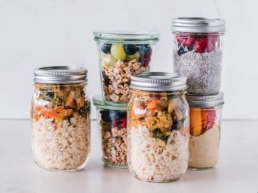By Sandra Huskey, First Mile Care, DPP Coach
A few weeks into the new year is the danger point for resolutions involving fitness. The glow of the holidays has passed and you’re back into your daily grind. Depending on where you live, you may be stuck indoors much of the time due to winter weather and/or restrictions around the ongoing pandemic. It’s easy to slip into the bad old habits.
When it comes to setting fitness goals, you need to be realistic. Focus on one or two small goals and work toward those so you are rewarded with success — and then set new goals! Other factors affecting success include finding appropriate exercises. “Appropriate” means not only exercises that work toward your goals, but that are modified to your current level of fitness. Keep it fresh by varying your workout routine every 6 to 8 weeks as you increase your level of fitness.
Help yourself to meet your fitness goals by setting aside regular time for them. Our lives revolve around schedules. We have schedules for work and for when we eat, when we meet friends for coffee, or drive our kids to events. Even if we’re working or attending classes from home, we’re still keeping to schedules for our Zoom book clubs and parent-teacher conferences. As a result, it’s easy to skip exercising as you’re just “too busy.” To make your in-home workout part of your routine, be sure to add it to your calendar so it becomes a priority. By making fitness a regular part of your scheduled activities, you will be more inclined to stick with it.
Plan on it!
Your workout can be the best part of your day if it’s something you’re prepared for. Know what you’re going to do by creating a workout or activity plan. Make sure to have any equipment you will be using all set and ready to easily grab to avoid looking for your equipment in the middle of your routine. Decide what your very first movement will be. Will it be breathing exercises, overhead arm stretches, or a brisk walk? By setting your plan into motion, you will be mentally prepared to move into your activity or exercise routine. Make sure to schedule this time for yourself, whether it means getting up early or sandwiching it into your workday. Visualize yourself getting dressed and ready, feeling energized and relaxed and listening to your favorite music. So once your shoes are on, your feet will be actively telling your brain that it’s “Go Time!”
Make it competitive
If you’re goal oriented or competitive, working out at home can still be a competition! Whether you’re competing against yourself or a virtual workout partner, you can create opportunities to win. Making your workouts competitive can be highly effective and enjoyable as you strive to set personal bests. Setting time goals (gradually increasing the timing of your planks or your walks), weight goals (increasing the weight of your dumbbells or resistance bands) or number goals (increasing the amount of repetitions or sets) can keep you motivated as you incrementally make fitness improvements.
Give yourself a reward
The most enjoyable part of competing is winning! When you reach a new fitness or activity goal, reward yourself. Set a realistic, achievable goal and then announce to yourself in advance what the prize will be. A new exercise outfit or even a new pair of colorful sport socks may just be the incentive you’re looking for. Or perhaps you’ve always wanted a massage but you haven’t been able to justify it. Set your goal high enough that the reward is worth the work.
Steady results
You can see visible results from an in-home exercise program using minimal equipment in as little as a few weeks. Within the first month, you should notice improvements in your mood. That’s because when you exert yourself through exercise, your brain produces lots of feel-good chemicals that enhance your feelings of happiness, energy, and confidence while also relieving stress and anxiety. In addition, you may also see improvements in your sleep. You can expect to see small physical changes in as little as three weeks; however, significant muscular changes develop more slowly, typically in six to eight weeks. In six months or longer, you should notice changes in blood pressure and body mass and inflammation.
Setting small goals and scheduling your personal in-home fitness routine will set you on the road to a lifestyle of fitness that benefits not only your physical body, but your mood and sleep as well.



